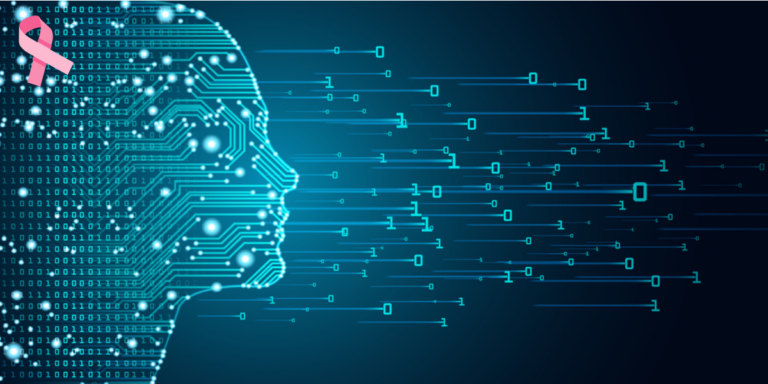Out of the 230,000 cases of breast cancer that will be diagnosed in the U.S. this year, about 45% will be discovered in the later stages of cancer, when a positive response to treatment is more difficult.
Fortunately, research shows that AI-enhanced software can improve the accuracy of mammography readings, which can reduce unnecessary biopsies and callbacks, and lead to earlier detection of small cancers.
To learn more about how AI can assist radiologists in improving breast cancer survival rates worldwide, we spoke with Kevin Harris, CEO of CureMetrix – a healthcare technology company that develops AI-driven software for mammography. In this interview, Kevin shares a personal story about his inspiration to start CureMetrix, discusses the benefits of artificial intelligence in breast imaging, and reveals how women can now have their mammograms read by AI from anywhere in the world.
[DocPanel] Why is breast imaging and cancer detection so important to you?
[Kevin Harris] Imagine that your wife, sister, or daughter went in for her regular mammogram, and the healthcare team missed that she had cancer. My mother-in-law died of breast cancer two years ago, and I know that early and accurate detection in breast cancer is key to improving cancer survival rates. Today’s technology includes the use of artificial intelligence along with the expertise of the radiologist.
With 40 million mammograms a year in the US, only five cancers per 1,000 are being found during screening exams. That means that a significant number of cancers are missed. The goal of CureMetrix AI is to help radiologists find those cancers and find them early to improve cancer survival rates.
[DocPanel] What inspired you to start CureMetrix?
[Kevin Harris] I reached a point in my career where I wanted to do something good and something impactful. With a degree in Cognitive Science and 25 years of business experience, healthcare seemed like the right thing to do. Exploring this idea with clinicians and data scientists, I learned that not only could my background working with global organizations be applied, but it could also make a big difference in supporting more accurate cancer detection. And with the combination of faster computers, more access to data and better algorithms, it seemed like the time was right to have a significant impact on radiology and specifically breast cancer screening.
[DocPanel] CureMetrix has evaluated hundreds of thousands of mammogram images – what’s been the biggest take away so far?
[Kevin Harris] Doctors are well educated, engaged, experienced, and intentioned. But mammography is hard. We’ve seen so much variability in physician performance. Our goal is to use AI to help doctors provide consistently great care regardless of their level of experience, the time of day, or where in the world they are reading the mammogram.
No doubt, AI will be a game-changer in healthcare, and as patients and doctors start to understand the value, we will see wide-spread healthcare adoption and growing consumer interest. The key is in the effectiveness of the AI. As a result, the data team at CureMetrix is focused not on just delivering AI, but on providing AI that works to quickly find suspicious areas on a mammogram without increasing work for the doctor or false-positive results for the patient.
CONNECT WITH A SPECIALIST
Get a Second Opinion
Take charge of your health with an online second opinion from a radiology specialist.
[DocPanel] From a patient standpoint – what is AI’s role in preventing mammogram false positives?
[Kevin Harris] When a patient gets a false-positive result (a result that indicates "falsely" that she may have cancer), that triggers a recall to the patient to come back in for additional tests.
This process adds cost to the healthcare system, inconvenience to the patient, and causes unnecessary anxiety for everyone. Roughly 95% of recalls are false, and 75% of biopsies are benign. Because a mammogram read using AI combined with a radiologist provides a higher level of accuracy, the potential for a false positive can potentially be reduced.
In our studies, we have seen up to a 69% reduction in false positives marks when the radiologist uses CureMetrix AI. And because a radiologist can quickly access the AI, in some cases, the breast care team can even provide the patient her results while she is in the office, so she will know before going home if a follow up is needed.
[DocPanel] How does AI-based mammography affect the patient experience? How does it influence a patient’s relationship with the radiologist and referring physician?
[Kevin Harris] The primary benefit of AI-based mammography from a patient’s perspective is earlier disease detection and faster diagnosis.
Consider being able to know immediately whether your mammogram is suspicious or whether, with the enhanced sensitivity and specificity of AI technology, you can leave the doctor’s office knowing your test results are negative.
If doctors can read mammograms faster, they can spend more time with their patients. This tool drives a higher level of patient care, can reduce patient anxiety, and can shorten the time between screening and treatment.
[DocPanel] Why should we combine AI with specialized radiologists? How can they work together to benefit the patient’s well-being?
[Kevin Harris] Combining the expertise of the radiologist with the AI algorithm is powerful. Whether you are coming in for a routine mammogram or a second opinion, AI technology helps the radiologist quickly identify anomalies so the radiologist can spend more time understanding them and applying a more informed diagnosis. The AI algorithm has been able to mark suspicious anomalies up to 6 years before being caught by a radiologist who is not using AI, so a second opinion at any stage may be helpful — even on a mammogram taken years ago.
[DocPanel] AI is a very abstract concept for many women who get an annual mammogram. How do you explain this to the average patient?
[Kevin Harris] Generally, here’s how AI works: The radiology technician takes the patient’s mammogram and uploads the images, as they usually do, into their screening program. With CureMetrix AI, the patient’s images are automatically de-identified and securely and anonymously processed by the AI algorithm to detect anomalies or irregularities that show up in breast images. Technology can identify subtle or hard to see abnormalities that may be difficult for the radiologist to see.
The AI has been able to learn, using millions of mammograms, to identify, mark, and score anomalies in a scan. Once the AI checks the mammogram, information is available for the radiologists to help them when they review your images. This process combines AI, or machine learning, with the expertise of the doctor to deliver a more in-depth review of the mammograms. And it all happens within minutes!
The use of AI in breast cancer screening is especially important if you have dense breasts. Dense breast tissue is associated with a higher-than-average risk of breast cancer – and that dense breast tissue can mask cancers on mammograms, making them difficult to detect.
Learn more about what it means to have dense breasts in our Guide to Understanding Fibroglandular Density.
[DocPanel] What are the biggest challenges you have to overcome to drive the adoption of this technology so patients can benefit?
[Kevin Harris] One of the significant issues facing AI is trust. Doctors and patients must be able to trust in the efficacy of the AI software. They need to know they can count on the AI application to deliver accurate results substantially equivalent to or better than the current standard of care. No different than a drug or medical device that requires FDA clearance, healthcare users of AI need to know where the AI works, where it doesn’t, and how and when to use AI solutions safely.
Another critical issue facing AI is fear among potential users, like radiologists. Some have expressed concern that AI’s computer algorithms will take the place of their clinical expertise. Many in the industry, however, do not hold this view. Doctors with an eye to the future see AI as an asset – one that will aid doctors in delivering better care overall.
[DocPanel] Should I take all my mammograms and run them through the AI engine to get peace of mind? Can a radiologist help me understand the results of the AI algorithm?
[Kevin Harris] It is essential to work with a breast care team that is using AI as part of their program. If they aren’t, they can quickly engage with CureMetrix and with radiologists who can understand and explain the results of a mammogram that has been read using AI technology. Innovative groups such as DocPanel are already using AI and can provide that second opinion quickly and easily—giving you the peace of mind you deserve.
[DocPanel] If AI algorithms had a personality, how would you describe cmAssist?
[Kevin Harris] cmAssist (a proprietary, investigational SaaS) uses AI to help identify, mark, and score regions of interest on screening and diagnostic mammograms. To describe the personality of cmAssist, think of it as a digital detective who is doggedly diligent, intelligent, and tenacious at finding suspicious anomalies in a mammogram. It is detail-oriented in marking areas of concern so that the radiologist can see them, and who is precise in helping the radiologist find data-driven clues that score for probability of malignancy in a mammogram.
Next, check out our interview with CureMetrix Chief Medical Officer, Dr. Alyssa Watanabe, on Why You Might Want AI Reading Your Next Mammogram.

Kevin Harris is CEO and Board Director of CureMetrix. Under Kevin’s leadership, CureMetrix launched the first FDA-cleared software in the U.S. that uses AI for mammography to help improve cancer survival rates worldwide.
